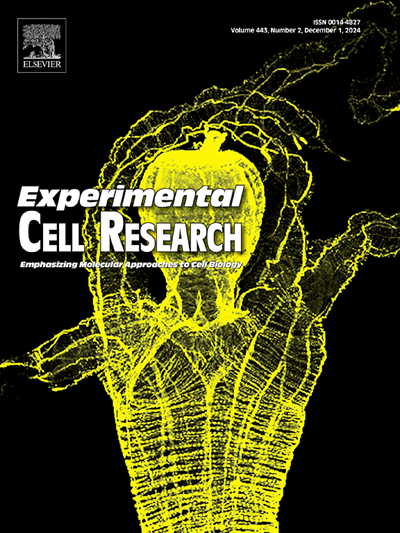OTUB1通过调节HMGB1介导PARP1去泛素化,缓解NAFLD。
IF 3.3
3区 生物学
Q3 CELL BIOLOGY
引用次数: 0
摘要
非酒精性脂肪性肝病(NAFLD)是一种常见的以肝细胞脂肪变性为特征的慢性疾病,不包括酒精、药物和其他明确的肝损伤相关因素。据报道,OTUB1在糖脂代谢的调节中起着重要作用。本研究旨在探讨OTUB1调控NAFLD的分子机制。通过高脂饮食诱导NAFLD小鼠模型,并进行葡萄糖和胰岛素耐量试验。此外,检测血清总胆固醇(TC)和甘油三酯(TG)水平。采用相应的生化方法测定血清丙氨酸转氨酶(ALT)、天冬氨酸转氨酶(AST)和碱性磷酸酶(ALP)水平。采用苏木精、伊红染色及周期性酸-希夫染色评价小鼠肝脏病理变化。采用逆转录-定量PCR、Western blot和免疫荧光染色检测nafld相关基因和炎症基因的表达水平。此外,通过共免疫沉淀法评估OTUB1与聚二磷酸腺苷核糖聚合酶(PARP)-1之间的调节关系。结果显示,在体内和体外NAFLD模型中,OTUB1均显著上调。敲除OTUB1可显著改善受影响的糖耐量和胰岛素敏感性,降低TG和TC含量,降低ALT、AST和ALP水平。此外,结果表明OTUB1可以通过抑制PARP1的泛素化来调节PARP1的表达,而PARP1敲除可以通过调节HMGB1来抑制肝脏炎症,从而改善NAFLD。靶向OTUB1可能是NAFLD的潜在治疗策略。本文章由计算机程序翻译,如有差异,请以英文原文为准。
OTUB1 mediates PARP1 deubiquitination to alleviate NAFLD by regulating HMGB1
Nonalcoholic fatty liver disease (NAFLD) is a common chronic disease characterized by hepatocyte steatosis, which excludes alcohol, drugs and other definite liver damage-related factors. It has been reported that OTUB1 serves a significant role in the regulation of glucose and lipid metabolism. The present study aimed to investigate the molecular mechanism underlying the effect of OTUB1 on regulating NAFLD. The NAFLD mouse model was induced via high-fat-diet, and glucose and insulin tolerance tests were then performed. In addition, the serum levels of total cholesterol (TC) and triglycerides (TG) were detected. The serum levels of alanine aminotransferase (ALT), aspartate aminotransferase (AST) and alkaline phosphatase (ALP) were assessed using the corresponding biochemical assays. Hematoxylin and eosin, and periodic acid-Schiff staining was carried out to evaluate the liver pathology in mice. The expression levels of the NAFLD-related genes and inflammatory genes were determined by reverse transcription-quantitative PCR, Western blot analysis and immunofluorescence staining. Furthermore, the regulatory association between OTUB1 and poly (adenosine diphosphate-ribose) polymerase (PARP)-1 was assessed by co-immunoprecipitation assay. The results showed that OTUB1 was significantly upregulated in both in vitro and in vivo NAFLD models. Knockout of OTUB1 significantly improved affected glucose tolerance and insulin sensitivity, decreased TG and TC content, and decreased ALT, AST and ALP levels. In addition, the results show that OTUB1 can regulate the expression of PARP1 by inhibiting the ubiquitination of PARP1, while PARP1 knockout can inhibit liver inflammation by regulating HMGB1, thereby improving NAFLD. Targeting OTUB1 could be a potential therapeutic strategy for the NAFLD.
求助全文
通过发布文献求助,成功后即可免费获取论文全文。
去求助
来源期刊

Experimental cell research
医学-细胞生物学
CiteScore
7.20
自引率
0.00%
发文量
295
审稿时长
30 days
期刊介绍:
Our scope includes but is not limited to areas such as: Chromosome biology; Chromatin and epigenetics; DNA repair; Gene regulation; Nuclear import-export; RNA processing; Non-coding RNAs; Organelle biology; The cytoskeleton; Intracellular trafficking; Cell-cell and cell-matrix interactions; Cell motility and migration; Cell proliferation; Cellular differentiation; Signal transduction; Programmed cell death.
 求助内容:
求助内容: 应助结果提醒方式:
应助结果提醒方式:


